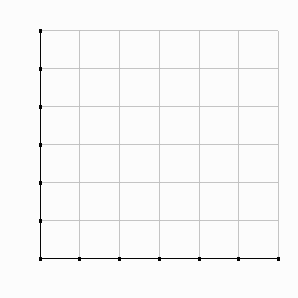Ex: rental subsidy
STEP 1: Shift the supply curve DOWN
by the amount of the subsidy.
Draw S' as a dotted line to reinforce the fact
that the original supply curve captures the true marginal cost (MC)
S' = MC - sub

III. The microeconomic role of government
A. Basic
policymaking tools
2. Taxes and subsidies
a. Taxes
(3) Who really pays the tax?
See The Economic Effects of Taxes worksheet -- review left panel
In general, market forces make
both buyers and sellers share the burden of the tax.
Buyers pay a higher price because of the tax (Pbt > P*)
Sellers receive a lower price because of the tax (Pst < P*)
How a tax
is divided between buyers and sellers is called tax incidence
| Incidence on buyers | Incidence on sellers | |||
| Pbt - P* | P* - Pst | |||
% paid by buyers = |
--------- | % paid by sellers = |
--------- | |
| t | t | |||
Lessons noted in worksheet:
Note 1: It is not government laws but the laws of supply and demand which determine who ultimately pays a tax.
Note 2: Buyers tend to pay more of a tax when demand is
inelastic compared to supply, and sellers tend to pay more of a tax when demand is elastic
compared to supply.
(the side of the
market with fewer substitute options gets stuck with more of the tax.)
Tax--> a hidden struggle
Sellers want buyers to pay it
Buyers want sellers to pay it.
Division of the burden depends on who has the more elastic response.
Despite this you find
lawmakers arguing all the time about who should be paying some particular tax.
Social security: 50/50: only by statute. In practice, since S of labor
is almost vertical, workers pay taxes on their incomes.
Any increase in employer costs gets passed on.
Employers don't care whether they give you a $ of income or a $ of
benefits. Workers pay it in the end.
Same with health insurance, parental leave, etc.
Note 3: Since it is only the size of a tax which matters and
not who is formally assessed it, you can show any tax any way you please:
you can simply insert a "wedge" equal to the size of the
tax between supply and demand, or shift supply up or shift demand down by the amount of
the tax.
By convention, most economists shift supply up, but feel free to
do whatever makes most sense to you.
How I think of it: tax = a "fake
cost"
Simply transfers some revenue from the market to the government
b. Subsidies -- Why? To encourage production/use
(1) Price and output effects
|
Subsidy = a "negative tax": Ex: rental subsidy
STEP 1: Shift the supply curve DOWN
by the amount of the subsidy. |
 |
STEP 2: Find Qsub, the equilibrium
quantity with the subsidy.
At P* - sub, there is an excess demand at Q*, so output
rises to where D and S' intersect
STEP 3: Find PBsub (the new price
buyers pay) = the height of D at Qsub.
the demand curve at the new quantity. Note that PB does not include the
subsidy--that comes from the government
STEP 4: Find PSt (the new price
sellers end up with) PSt = PBt + sub
Note: PSsub = MC at Qsub
PSsub INCLUDES the subsidy because that amount comes from the
government.
(2) Efficiency and equity effects
There are now 3 parties to consider: consumers and producers--as before; and the government
|
See subsidy worksheet Sub spending
|
 |
The gains in PS and CS are not "stolen" from each other; they are paid for by taxpayers. (Can think of buyers and sellers facing prices in separate markets)
Unless we specifically desire to increase output and/or use, subsidies also create inefficiency